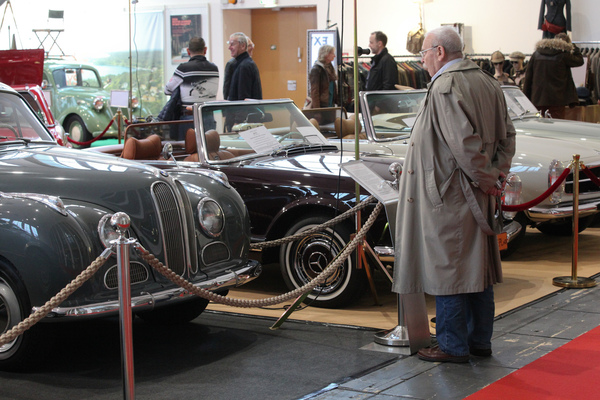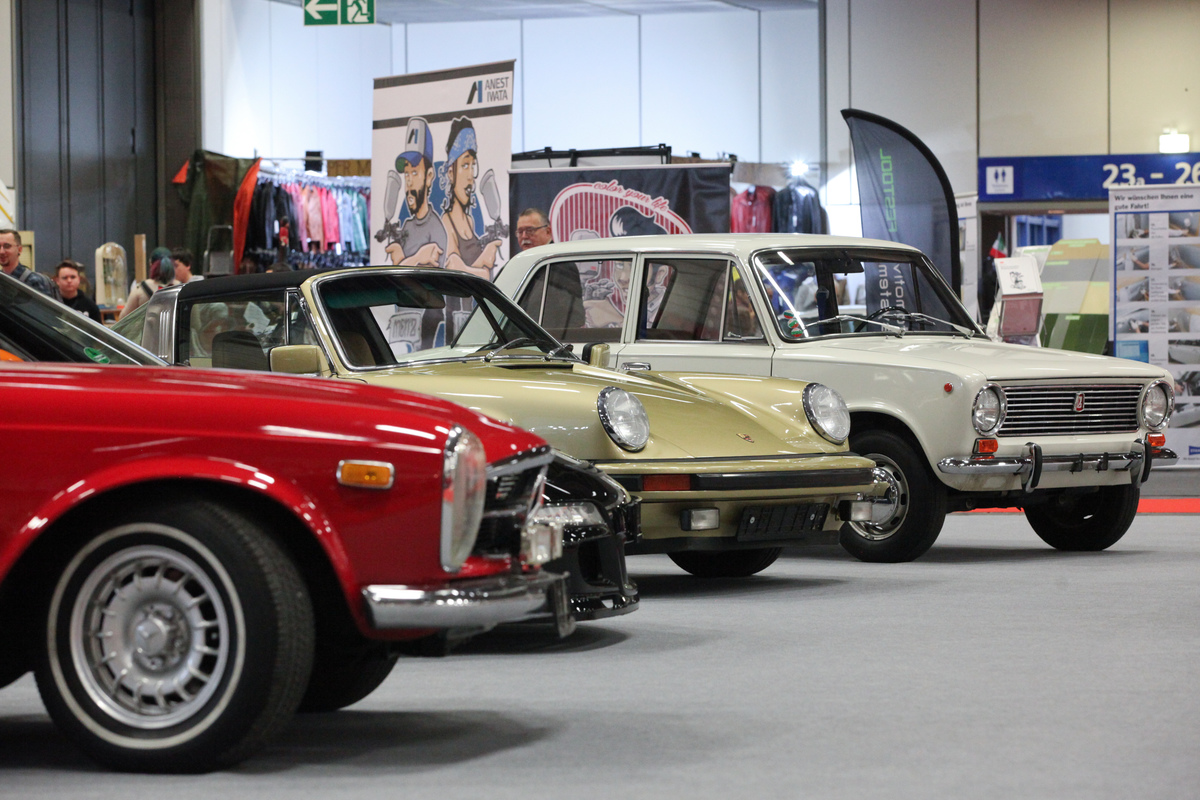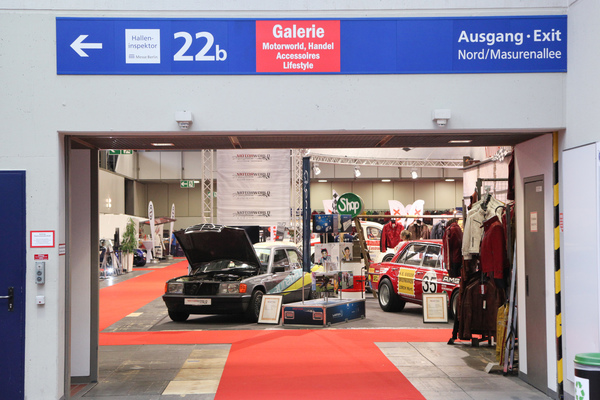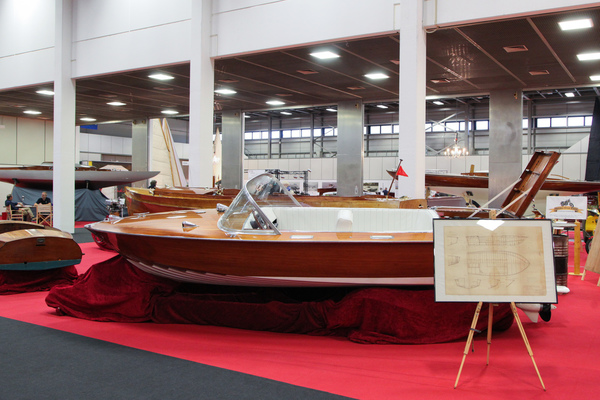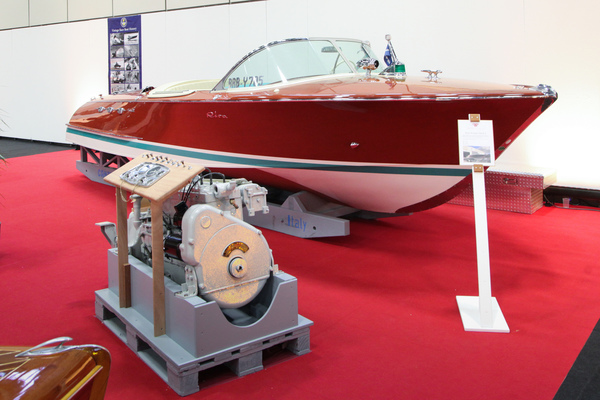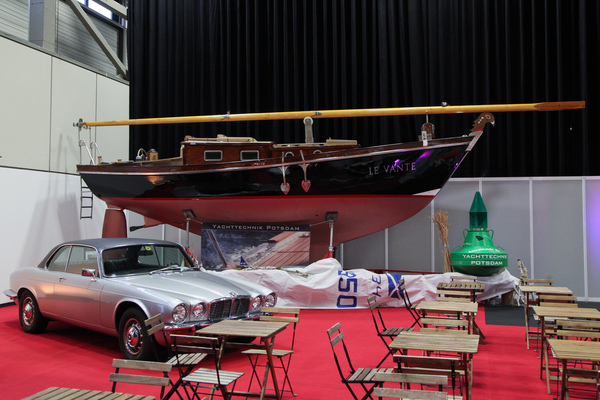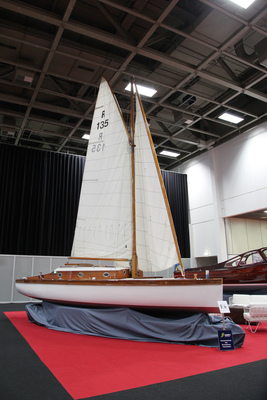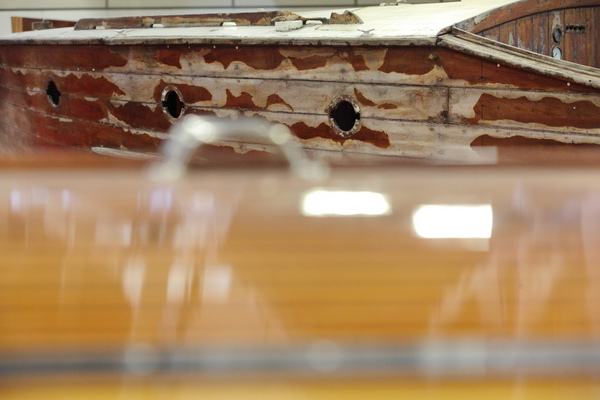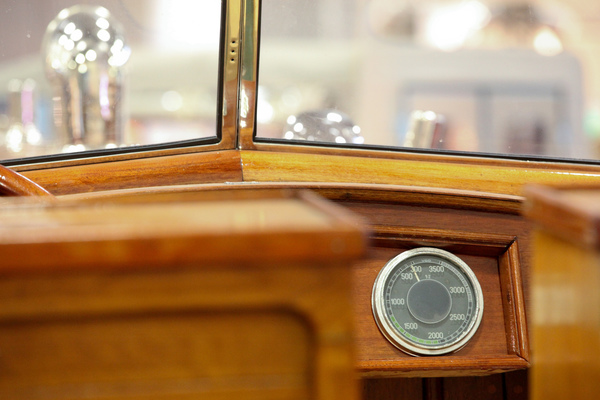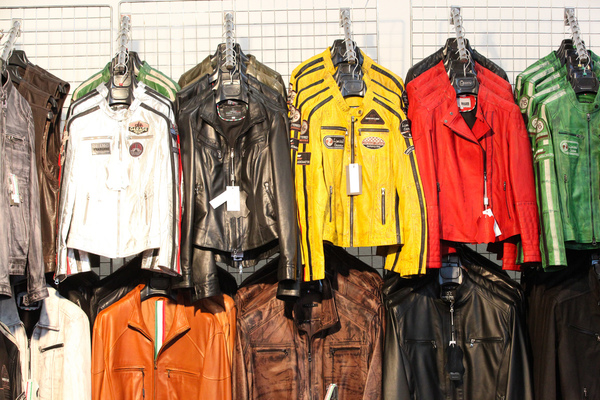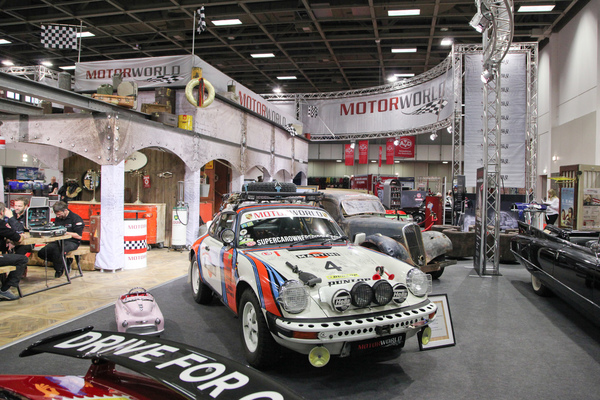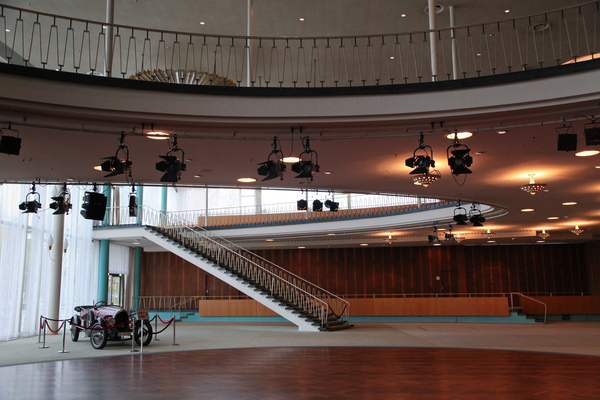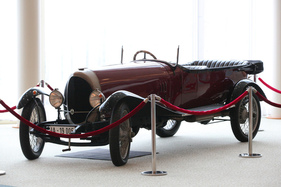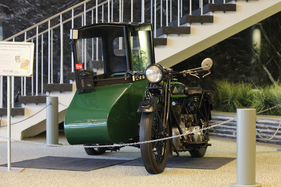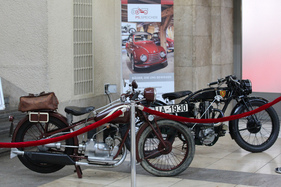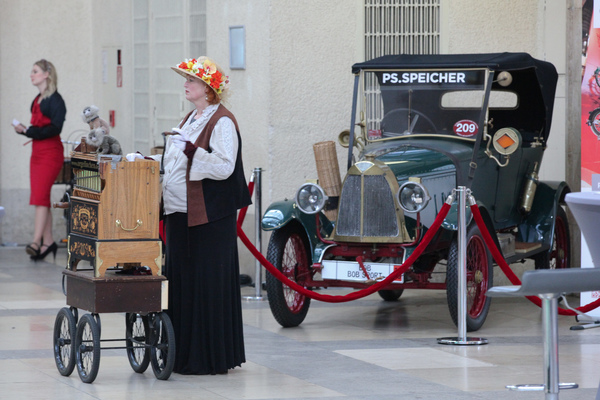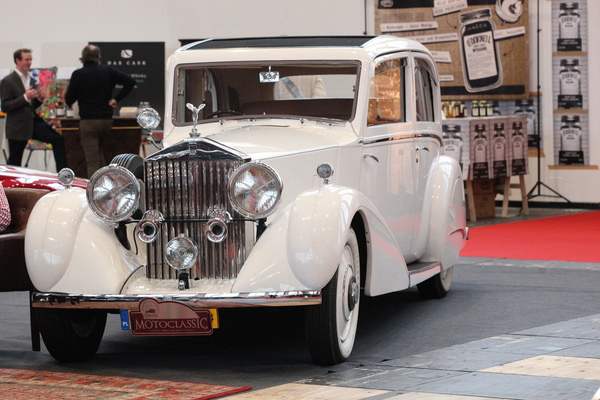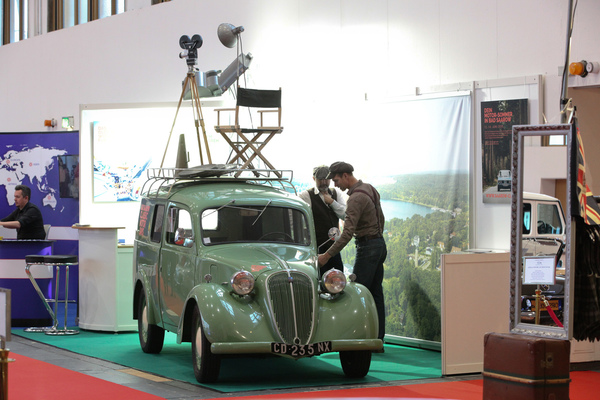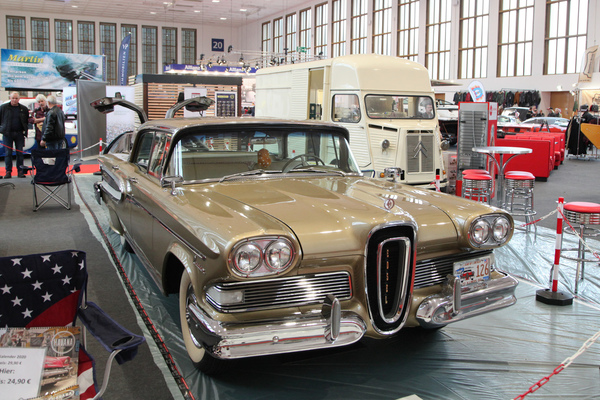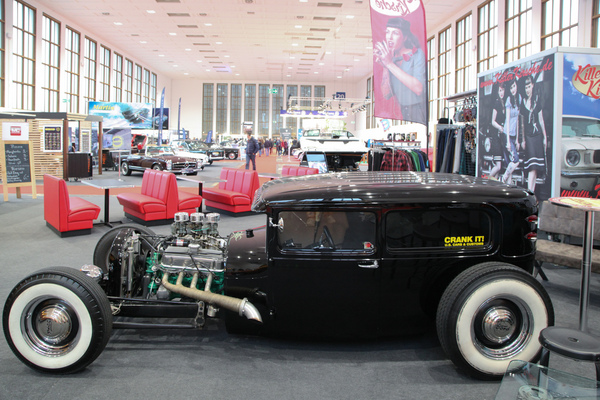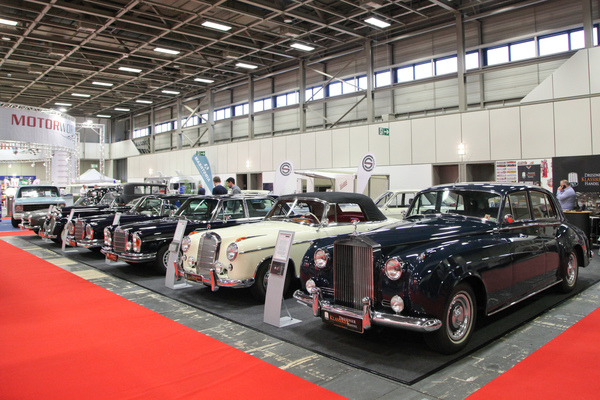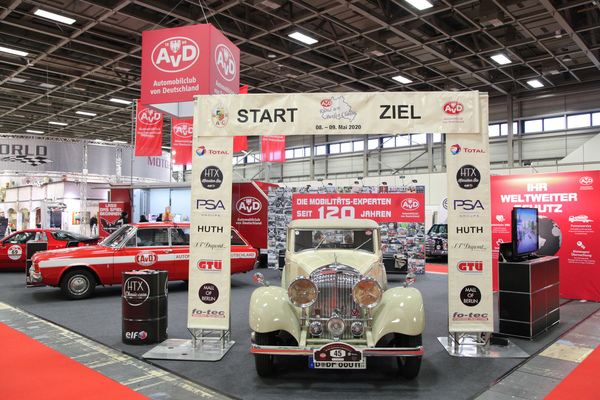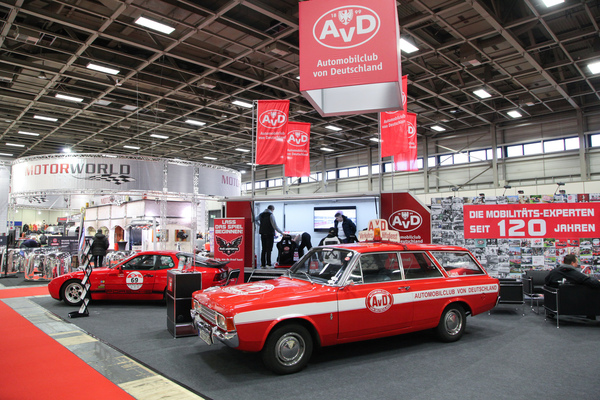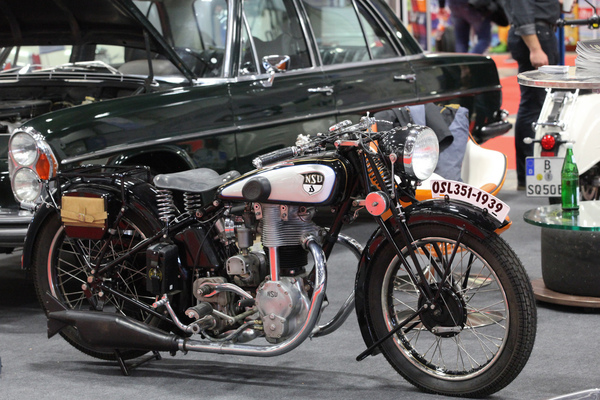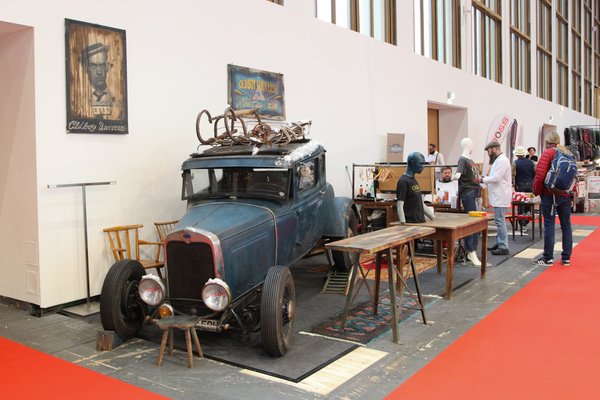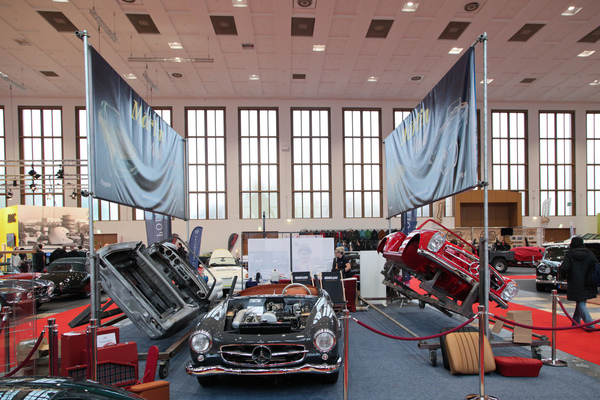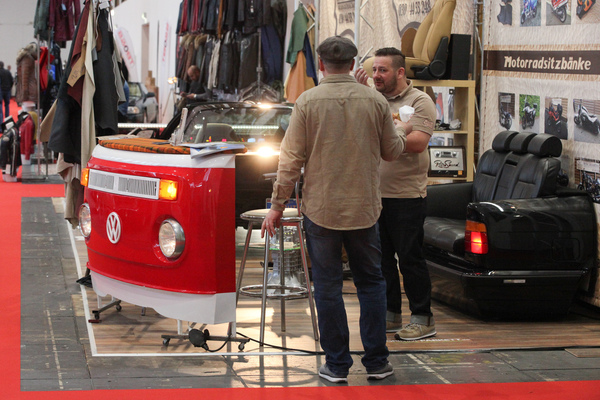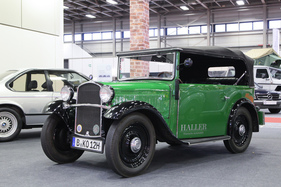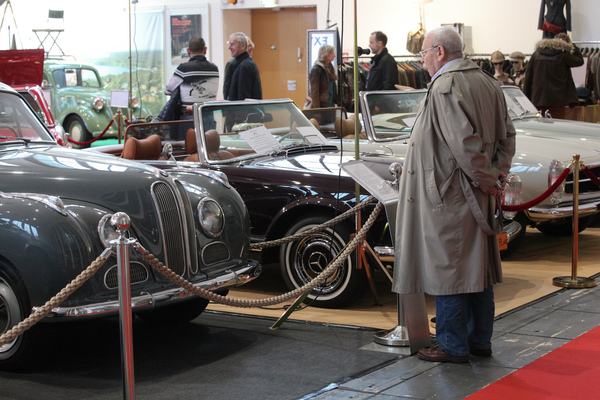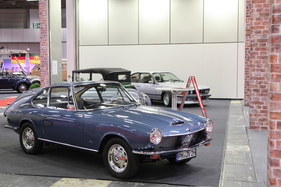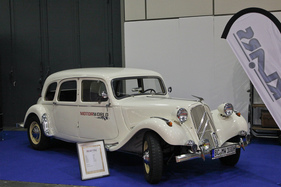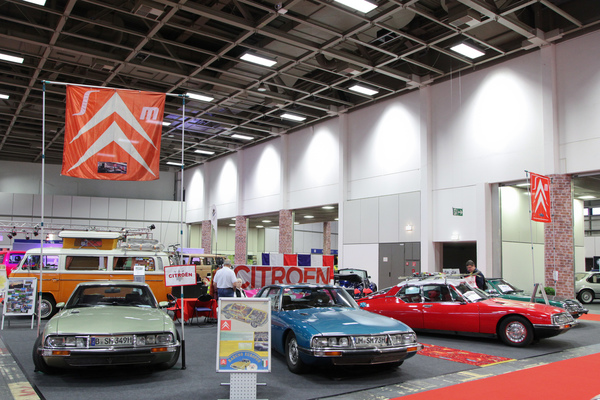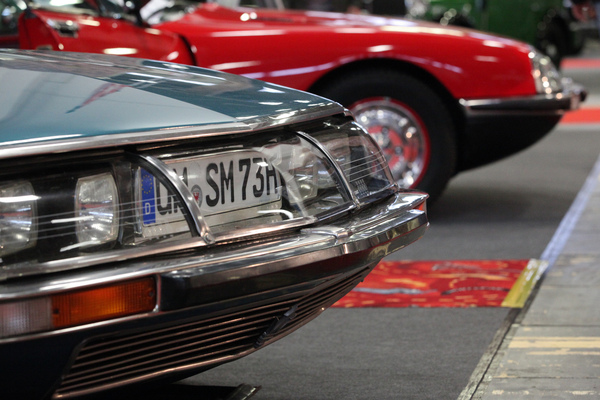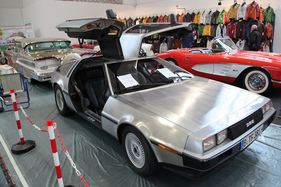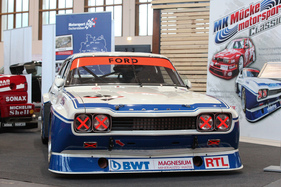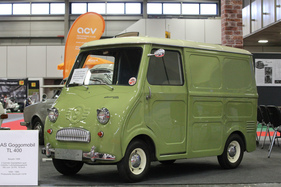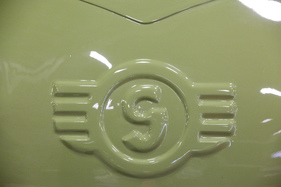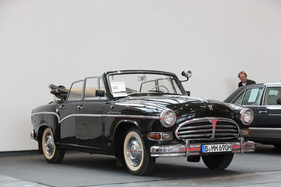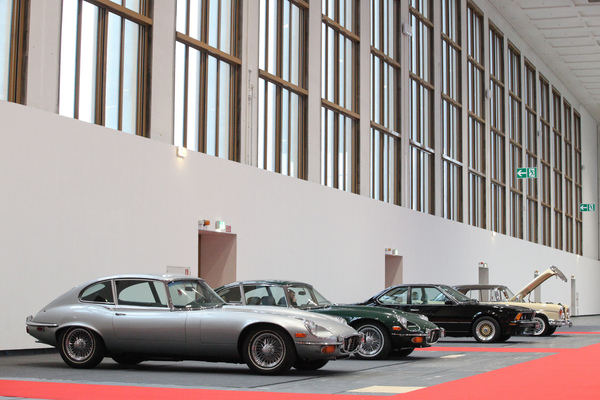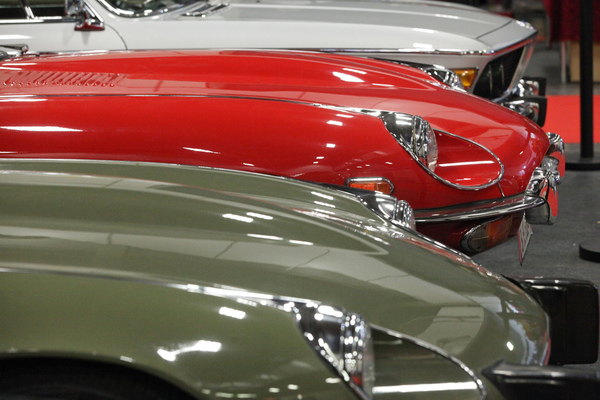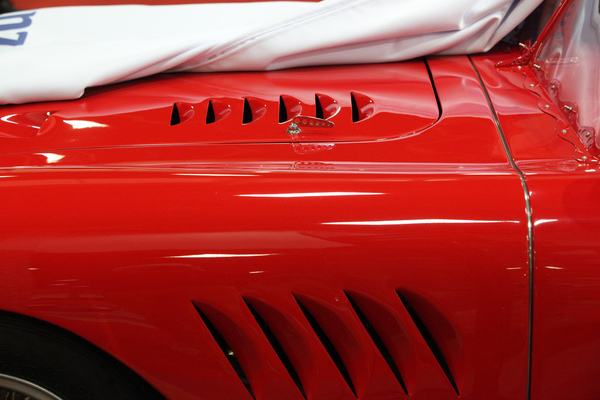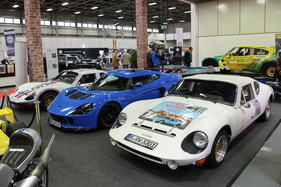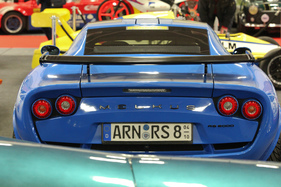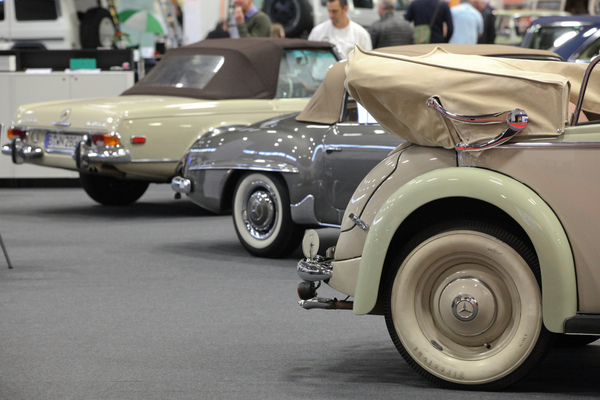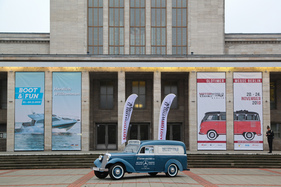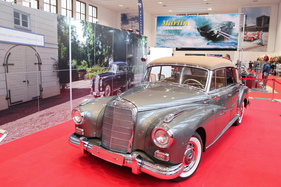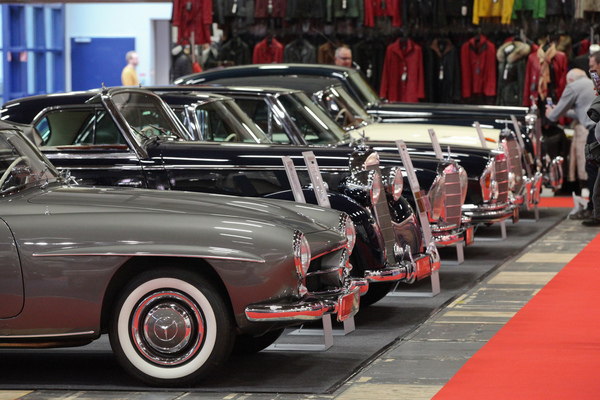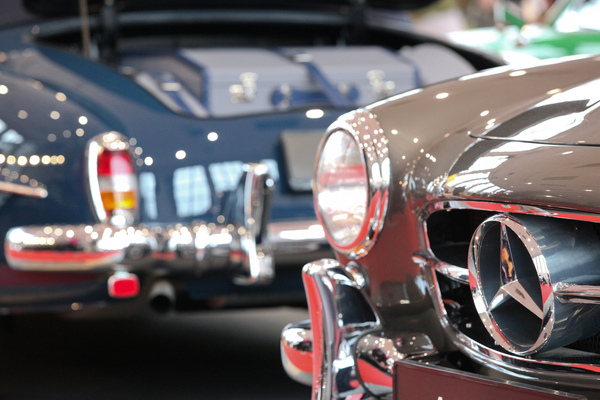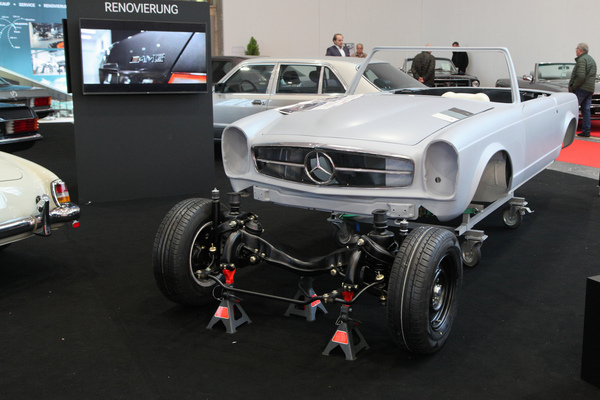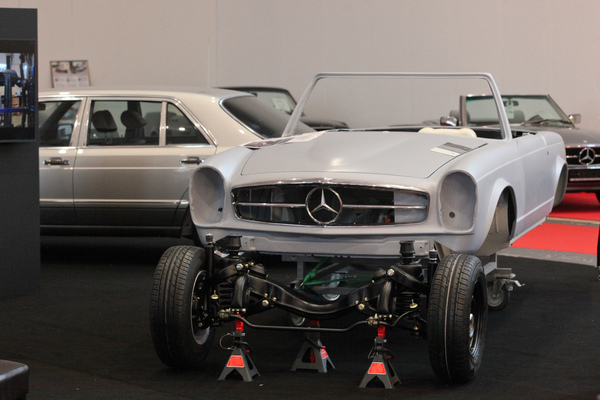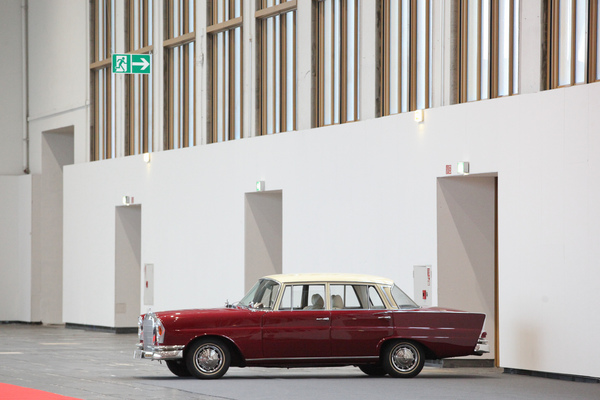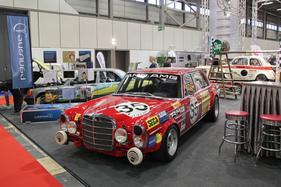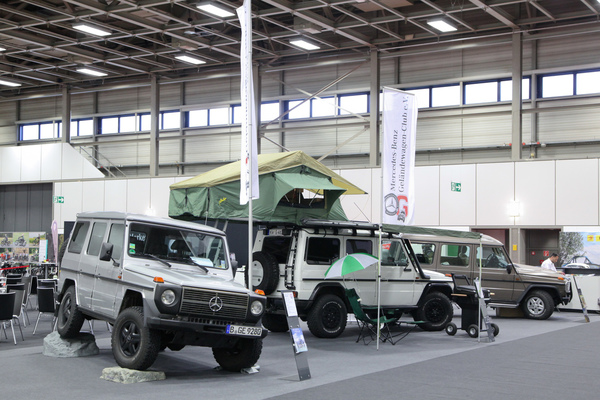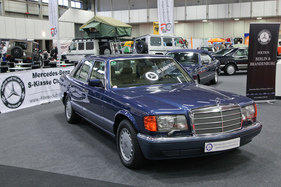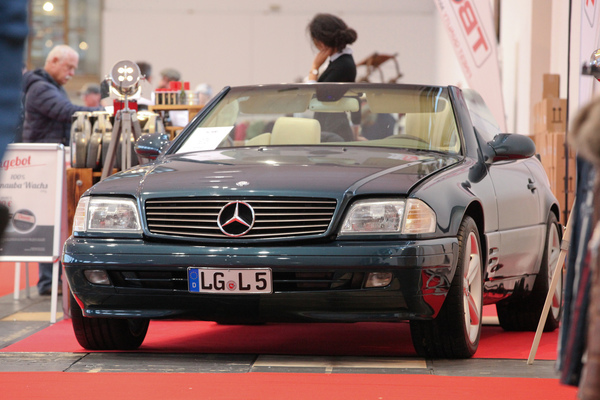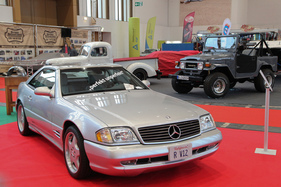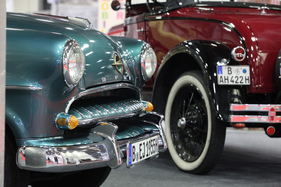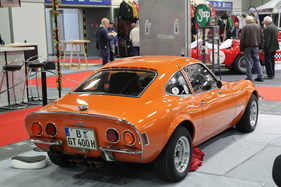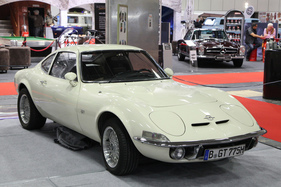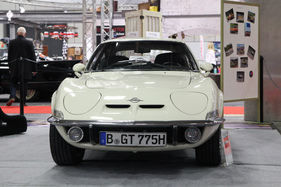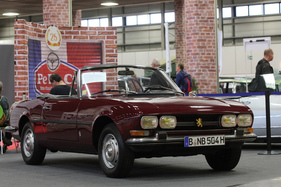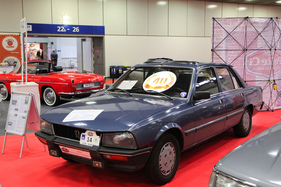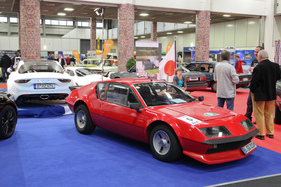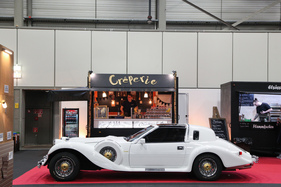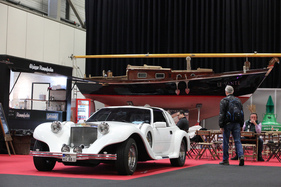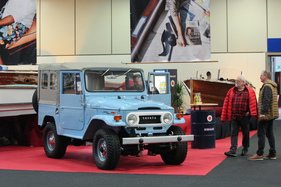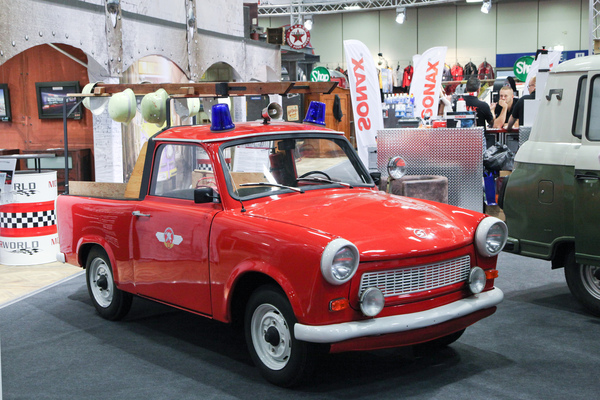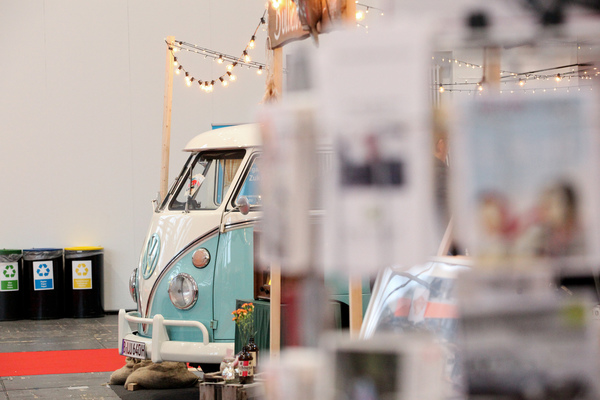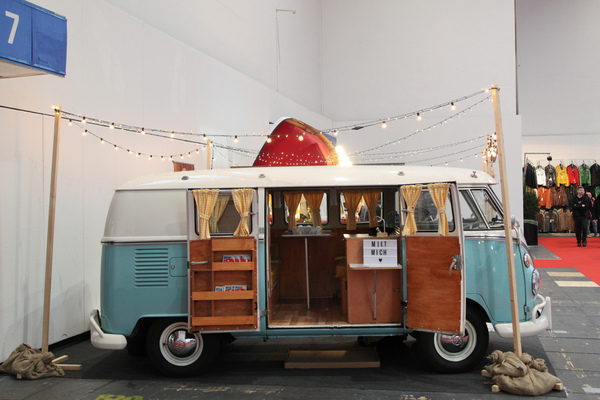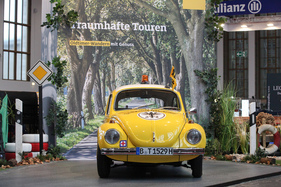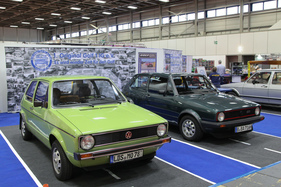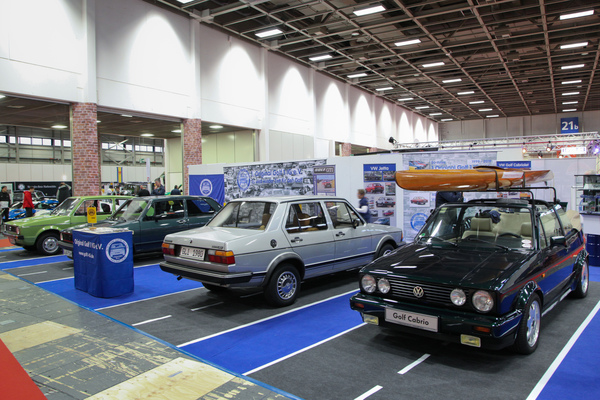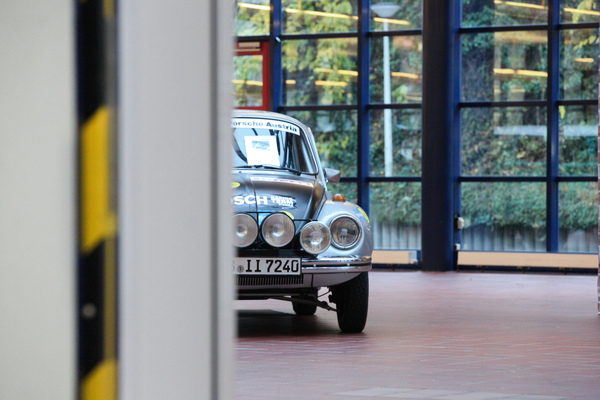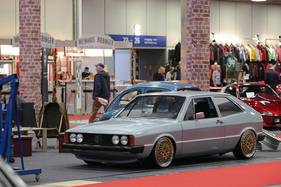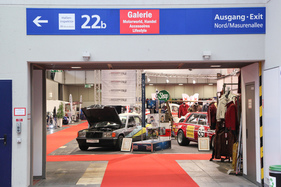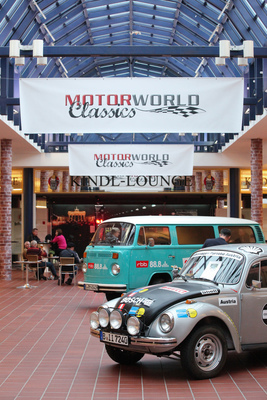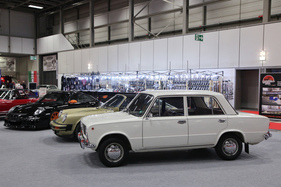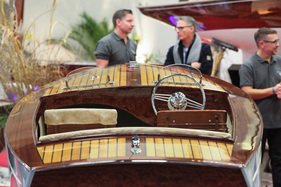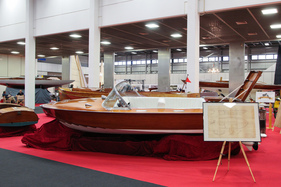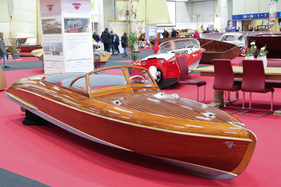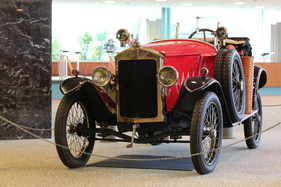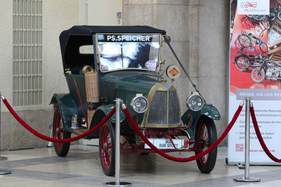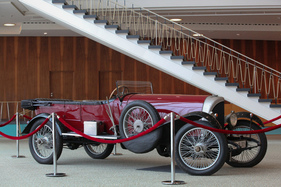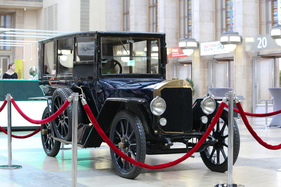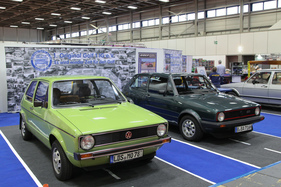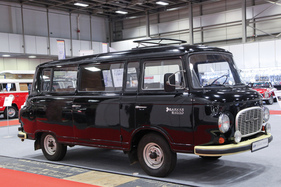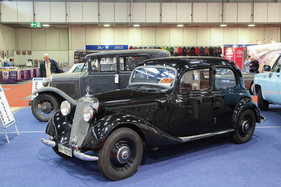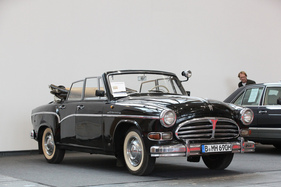The classic car fair in Berlin has been one of the most appealing events of its kind for years. It takes place in elegant halls in the center of Berlin and the organizers have been providing nostalgic splashes of colour since the beginning.
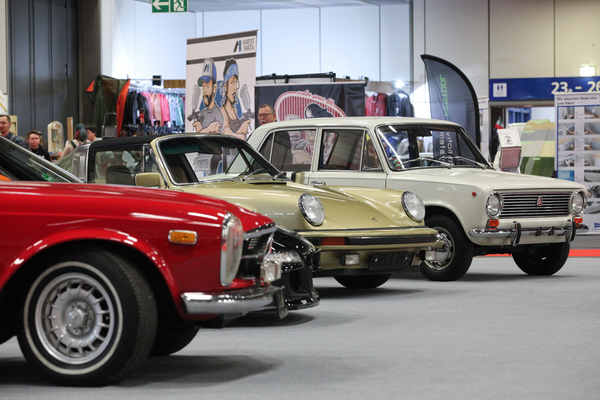
The fair usually takes place early in the fall, but for 2019 the date was moved back and the classic car event was combined with the "Boot & Fun" boat show.
Cars and boats
for the first time
Between November 20 and 24, 2019, there were a good dozen halls for the more than 50,000 visitors to wander through, depending on how you count them, but more than half were dedicated to nautical ...

... and only four of them focused on old automobiles. In addition, there was the former premium hall "18" to the left of the north entrance, which was assigned to the private vehicle market in 2020.
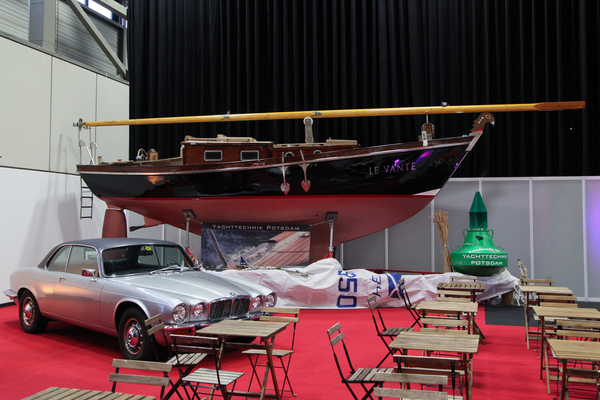
An interesting "hybrid" was hall "23", which was directly adjacent to the first classic car hall, but was occupied by old wooden boats, which certainly exuded their very own charm, especially as there were also some old cars cavorting between the boats, so that you could smoothly switch from one world to the other.
In keeping with the Motorworld philosophy
In general, the combination of different exhibition themes fits in perfectly with the Motorworld philosophy, which is known for its ability to integrate more or less related product areas. Boats make a lot of sense here, as do clothes, culinary delights and even new cars.

This does not have to be a disadvantage for the ideally broadly interested trade fair visitor, on the contrary. There was certainly a lot to see in Berlin, even if you were "only" interested in cars.
A clearly laid out special show
The special show dedicated to cars and motorcycles that were once built in Berlin was interesting, but not exactly comprehensive. Among other things, an Ego 4/14 Sport from 1922 was on display.
These cars were built by Mercur Flugzeugbau GmbH after the First World War. Rudolf Caracciola won the Avus small car race with it in 1923. The Ego brand then had to give up in 1927.
The 1920 BOB Sport also took part in the small car race on the Avis and was victorious. There was no long-term success here either, and the car shown is said to be the last survivor.
The NAG C4B from 1923 was larger and more powerful. Its four-cylinder engine had a displacement of 2553 cm3 and produced 40 hp. This made 100 km/h possible, an impressive speed at the time. However, the Neue Automobil-Gesellschaft did not survive the interwar years either and had to be closed down in 1930 due to economic failure.
AGA Fahrzeugwerke GmbH wanted to build the "best German utility car" in the 1920s. The AGA Type A 16/20 PS from 1921 offered space for four people and easily climbed even the steepest inclines, at least in the advertising. AGA has not survived either, nor have the manufacturers of the motorcycles on display.
Many small anniversaries
The clubs exhibiting in Berlin knew how to identify many anniversaries that you wouldn't immediately think of. The French were particularly well represented here, with the Peugeot 504 Cabriolet celebrating its 50th birthday, the Peugeot 504 its 40th and the Renault Floride even its 60th.
But anniversaries were also celebrated at the Mercedes-Benz clubs, with the W126 celebrating its 40th anniversary and, as is well known, the G-Class also turning 40.
The Golf for the GDR
Not an anniversary, but a very special story surrounds the 10,000 VW Golfs that were delivered to the GDR in 1978. They were delivered in the colors Manila green, Miami blue, Malaga red, Dakota beige and Panama brown. Delivering the cars was not enough; a customer service department with 16 workshops and a spare parts trade also had to be set up.
The East Germans had to do without a GTI; there was a choice between 50 or 70 hp, petrol or diesel, and three or five doors. After a substantial price reduction, the Golf ultimately cost DM 22,000 to DM 26,000 in the GDR. And at least one survived and was exhibited in Berlin.
Wide range of trade offers
Of course, there were also cars for sale in Berlin. Although the large and nationally known dealers were missing, other suppliers who also had unusual vehicles to offer had filled the gap.
In keeping with the proximity to former East Germany, there was a Barkas B 1000 from 1976 for sale for EUR 9500. For the uninitiated: The B 1000 is a small van with a two-stroke engine, which was built in Karl-Marx-Stadt, now Chemnitz, in Saxony from 1961 to 1990.
If you wanted to buy a movie star, you even had the choice between a Ford Model A or a Mercedes-Benz 170 V.
Exotic rarities were also on offer, such as a Horch P 240 Sachsenring as a four-door convertible or a Ferrari Daytona Spider replica based on a Corvette C3.

And of course there was also a wide selection of Porsche 911s and Mercedes-Benz 190 SLs.

However, many of the special cars came to the show via clubs or Motorworld itself and were not for sale. But you don't always have to buy everything, it's also fun to look at.
What's next?
With the visible decline in exhibitors and the increasingly icy wind, which is generally making the industry shiver, many trade fair visitors wondered what the future held for Berlin's friendly classic car fair. As a German metropolis, Berlin certainly deserves its own trade fair, but the exhibitors also have to keep up. Because as compact as Motorworld Classics Berlin 2019 was, it will probably not be easy for the trade fair to attract enough classic car enthusiasts with purchasing power to make the effort worthwhile for the exhibitors.
